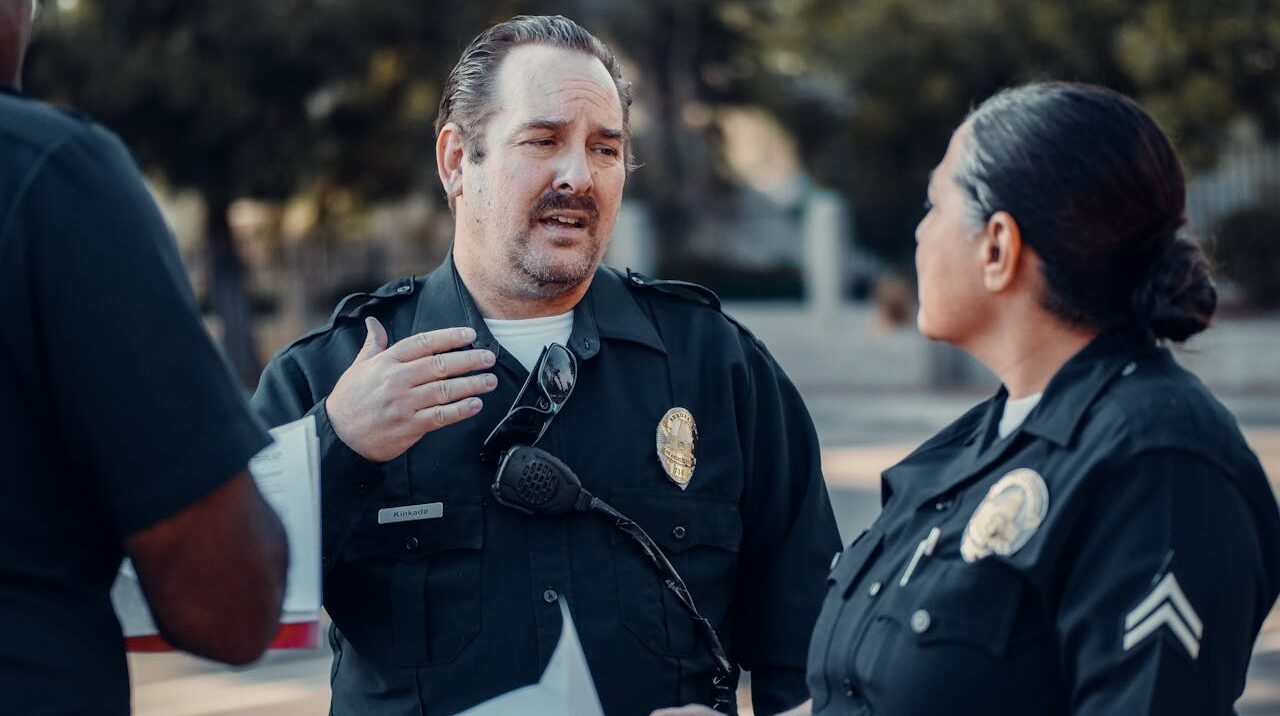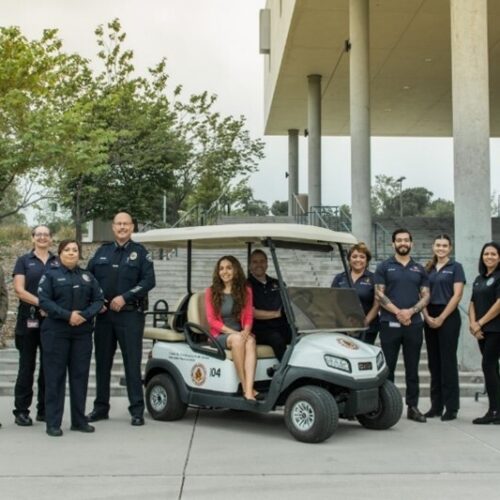
More than Just Heroes: Two Cities Offer a Pathway to Reducing Homelessness in America
Over 50 million Americans have some sort of contact with the police in a given year, most commonly when they are pulled over in a traffic stop. While there are important exceptions, most of those people will be ticketed or warned and then drive away. They will never hope or expect to see that officer again.
Then there are officers like the one I met on a visit to the Wichita Police Department in the summer of 2019.
Officer Nate Schwiethale, or “Officer Nate” as he is known, looks appropriately and uncannily like the leading man from a cop drama. Whether your generational reference point is Peter Falk as Frank Columbo or Dominic West as Jimmy McNulty, he combines the same solid, serious face with kind eyes and an easy smile. His work in Wichita has been front of mind as the country grapples with a growing homelessness crisis and competing ideas on how to resolve it.
In 2011, Officer Nate began developing Wichita’s homeless outreach team (HOT), which now helps connect more than 100 people annually to housing. At the time, it was his job to know who was living on the streets and, whenever possible, help them get into appropriate housing. What that meant in practice was varied. Officer Nate often spent his days checking under bridges and in abandoned buildings, the kinds of out-of-the-way places people go when no other shelter is available.
When a fellow officer came upon a 90 year-old World War II veteran who had been living in his broken-down car, for example, he called in Officer Nate. As a first step, Officer Nate gave the veteran, Mr. Johnson, something to eat and drink and brought him to a day shelter where he was able to take a shower and do his laundry. He then connected him with the Veterans Affairs hospital, where Mr. Johnson received a few days of medical care. But most meaningful was what came next: Officer Nate connected with Passageways, a nonprofit organization that provides housing for veterans, to offer Mr. Johnson a room in a small home. It was the first roof he’d had over his head (that wasn’t his car’s) in 30 years.
On a hot, sunny, summer day in far-west East Kansas, it was hard to see Officer Nate as anything other than a hero. (Google his name and you’ll find more than one local news story about a person he’s helped who now considers him a friend and at least two who call him a brother.) But as I spoke with him more during my visit, I couldn’t help being nagged by a sense that his heroism underscored, as much as it addressed, the deficiencies in our country’s approach to unsheltered homelessness.
Heroism Is Not a Strategy
Back in 2020, I had the opportunity to visit another city’s police department—Houston—to learn about the work their co-responders were doing to address homelessness in the city. Like Wichita, Houston’s police department had started doing the hard work of building systems of support for people experiencing homelessness. And in December 2024, I went back to see what impact these changes were having.
During my most recent trip, I rode with Officer Nick Vogelsang of Houston’s HOT to see firsthand the solutions they had developed since my original visit. One of the most impressive to me was the HOT ID, an identification card that the HOT can issue to anyone experiencing homelessness who has had an ID at one time (within the last 20 years) in Texas. People can use this ID to access services and benefits, like SNAP. It’s the kind of elegant solution that people can design when they are close to a problem and resourced and equipped to address it.
As Officer Vogelsang and I rode around downtown Houston, what was also striking to me was the number of partner organizations whose operations he pointed out. To our right was a medical center that offered dental care, a key unmet need for many who are unsheltered. To our left was a shelter, about which he knew critical information like who could get served and who might be turned away, and importantly, the hours in which they accepted arrivals. We also drove to a homeless encampment under a bridge, where Officer Vogelsang took the time to check up on the people he knows and to remind a man whose medication is running out that he’ll need to schedule an appointment to get a refill. He offered the man a ride to the clinic if he needed one.
Heroes, like Officers Nate and Vogelsang, are people who champion difficult causes that others avoid and who fight and win against impossible odds. While I am deeply inspired by them both, the painful truth is that one knight on a white horse–or even a few knights and their horses–cannot solve our nation’s homelessness crisis alone.
To make and sustain a nationwide reduction in unsheltered homelessness requires something that is both a lot less exciting and a lot harder to achieve: rich systems to identify people in need, build their trust, and connect them to appropriate services.
Shared Goals at the Center of Sustainable Change
Cities like Wichita and Houston have made great strides in building systems of support for people experiencing homelessness, showing what’s possible when all stakeholders, including law enforcement, coordinate together. As a result, Wichita’s homeless outreach program was named as the best of its kind in the nation by the Virginia Center for Policing Innovation in 2019, and Houston’s collaborative homeless system approach has resulted in the city reducing its overall homeless population by 63 percent between 2011 and 2023.
But more progress is still needed.
Sustainable change, the kind that will meaningfully impact the homelessness crisis our country is facing, will need community partnerships that focus on cross-systems collaboration and that have a shared goal of reducing unsheltered homelessness. We must also establish and track metrics to ensure progress is being made. And we can’t do any of that without law enforcement at the table.
Whether law enforcement is leading the outreach or serves as a critical member of the team, when police departments invest in partnerships with their local Continuums of Care and homelessness services providers, they have the unique ability to leverage their presence in communities to help people find pathways to services, and ultimately, to permanent housing. Law enforcement agencies also often have political leverage to request financial investments that community-based organizations may not. With support from law enforcement leaders, models such as HOTs can be scaled appropriately, included in city or county budgets, and used to help ensure people have access to the services and supports needed so that they don’t end up back on the streets.
My visits with Officers Nate and Vogelsang were both encouraging and enlightening. I was heartened to see the progress being made as a result of people passionate enough about the problem to want to do what it takes to resolve it. But I also know that we can’t leave our heroes out here doing the work on their own. We show them we value them when we give them the tools and support to get the job done.
This web article is part of a series on housing in America. To read part one, visit A Place to Call Home: A Key Ingredient to Reentry Success.
For more information on how law enforcement agencies can lead or support homeless outreach efforts, visit the Police-Mental Health Collaboration Toolkit’s Responding to Homelessness module, which offers resources, key information, and best practices on addressing unsheltered homelessness.
Photo credit: Photo by Kindel Media
About the author

The sharp rise in school shootings over the past 25 years has led school officials across the U.S.…
Read MoreA three-digit crisis line, 988, launched two years ago to supplement—not necessarily replace—911. Calling 988 simplifies access to…
Read More Taking the HEAT Out of Campus Crises: A Proactive Approach to College Safety
Taking the HEAT Out of Campus Crises: A Proactive Approach to College Safety
The sharp rise in school shootings over the past 25 years has led school officials across the U.S. to take a closer look at ways to keep students safe. For Chaffey College in Rancho Cucamonga, California, a tragic incident at a nearby university hit close to home and spurred campus leaders to revisit their own school’s threat assessments and crisis responses.
Read More From 911 to 988: Salt Lake City’s Innovative Dispatch Diversion Program Gives More Crisis Options
From 911 to 988: Salt Lake City’s Innovative Dispatch Diversion Program Gives More Crisis Options
A three-digit crisis line, 988, launched two years ago to supplement—not necessarily replace—911. Calling 988 simplifies access to services when people are seeking help for themselves or loved ones with suicidal thoughts, behavioral health concerns, or substance use-related crises.
Read More Matching Care to Need: 5 Facts on How to Improve Behavioral Health Crisis Response
Matching Care to Need: 5 Facts on How to Improve Behavioral Health Crisis Response
It would hardly be controversial to expect an ambulance to arrive if someone called 911 for a physical health emergency. And yet, for years, the default responders for a behavioral health emergency have been law enforcement officers, not behavioral health professionals.
Read More











